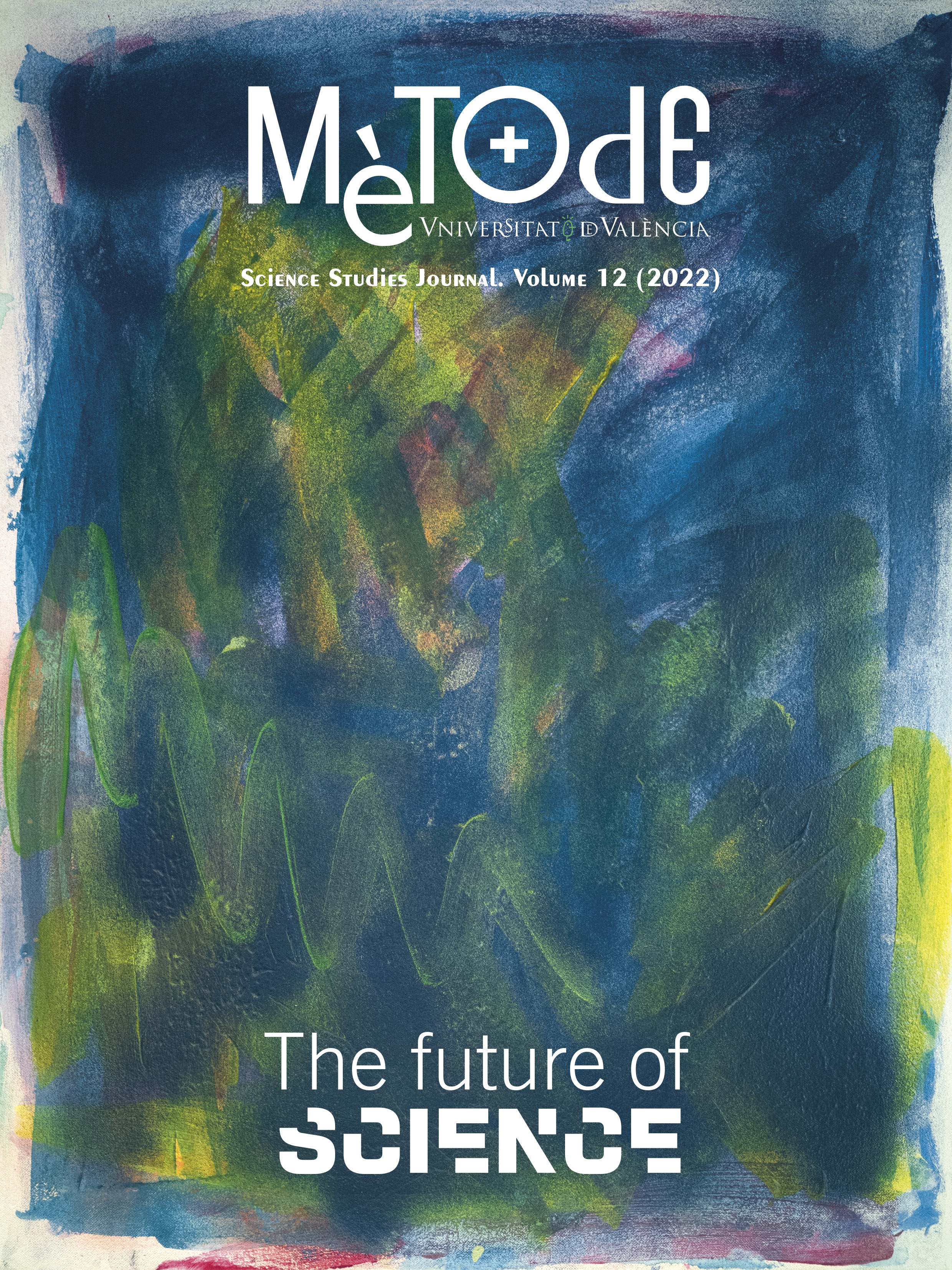Exploring radiation measurement after Fukushima: When media ecology meets citizen science
DOI:
https://doi.org/10.7203/metode.12.17642Keywords:
citizen science, media ecology, Marshall McLuhan, Fukushima, radiation-measuring Abstract
Abstract
While various scholars have investigated the role of citizens in generating scientific data after the Fukushima Daiichi nuclear disaster under the labels of citizen science and citizen sensing, this essay draws on media ecology and explores its potential theoretical usefulness for enhancing our understanding of post-Fukushima citizen science practices. Taking Marshall McLuhan’s perspective of technology as a medium, this article creates a theoretical framework for foregrounding the role of a measurement device (of radiation levels, in this case) in extending its user’s body and mind. In doing so, this essay attempts to contribute to the fields of media studies and Science, Technology, and Society (STS).
 Downloads
Downloads
 References
References
Abe, Y. (2015). Measuring for what: Networked citizen science movements after the Fukushima nuclear accident. [Tesis doctoral, University of Southern California]. USC Digital Library. http://digitallibrary.usc.edu/cdm/ref/collection/p15799coll3/id/620280
Abe, Y. (2020). Citizen before science: R-DAN and its monitorial ethic after Chernobyl. En M. Fathisalout-Bollon, & A. Berti-Suman (Eds.), Legal, social and ethical perspectives on health & technology (pp. 65–90). Sovoie Mont Blanc University Press.
Beck, U. (1992). Risk society: Towards a new modernity. Sage.
Berti-Suman, A. (2020). Sensing the risk: In search of the factors influencing the policy uptake of citizen sensing. Tilburg Law School.
Carey, J. W. (2008). Communication as culture. Routledge.
Gabrys, J. (2019). Sensors and sensing practices: Reworking experience across entities, environments, and technologies. Science, Technology, & Human Values, 44(5), 723–736. https://doi.org/10.1177/0162243919860211
Gabrys, J., Pritchard, H., & Barratt, B. (2016). Just good enough data: Figuring data citizenships through air pollution sensing and data stories. Big Data & Society, 3(2), 1–14. https://doi.org/10.1177/2053951716679677
Goodchild, M. F. (2007). Citizens as sensors: The world of volunteered geography. GeoJournal, 69(4), 211–221. https://doi.org/10.1007/s10708-007-9111-y
Kenens, J., Van Oudheusden, M., Yoshizawa, G., & Van Hoyweghen, I. (2020). Science by, with and for citizens: Rethinking ‘citizen science’ after the 2011 Fukushima disaster. Palgrave Communications, 6, 58. https://doi.org/10.1057/s41599-020-0434-3
Kuchinskaya, O. (2019). Citizen science and the politics of environmental data. Science, Technology, & Human Values, 44(5), 871–880. https://doi.org/10.1177/0162243919858669
Maruko, K. (2012). Hōshasen sokutei no uso [Mentiras en las mediciones de radiación]. Mynavi.
McLuhan, M. (1964). Understanding media: The extensions of man. Routledge.
McLuhan, M., & Fiore, Q. (1967). The medium is the massage. Penguin Books.
Nihon Hōshasen Kanshitai. (2011). Gaigā kauntā saishin gaido [Última guía sobre contadores Geiger]. Softbank Creative.
Postman, N. (1970). The reformed English curriculum. En A. C. Eurich (Ed.), High school 1980: The shape of the future in American secondary education (pp.160–168). Pitman.
Scolari, C.A. (2012). Media ecology: Exploring the metaphor to expand the theory. Communication Theory, 22, 204–225. https://doi.org/10.1111/j.1468-2885.2012.01404.x
Sternsdorff-Cisterna, N. (2019). Food safety after Fukushima: Scientific citizenship and the politics of risk. University of Hawaii Press.
Strate, L. (2004). A media ecology review. Communication Research Trends, 23(2), 3–48.
Strate, L. (2008). Studying media as media: McLuhan and the media ecology approach. Media Tropes, 1, 127–142.
Strate, L., & Wachtel, E. (2005). Introduction. En L. Strate, & E. Wachtel (Eds.), The legacy of McLuhan (pp.1–21). Hampton Press.
Williams, R. (2003). Television: Technology and cultural form. Routledge.
Wynn, J. (2017). Citizen science in the digital age: Rhetoric, science, and public engagement. The University of Alabama Press.
Downloads
Published
How to Cite
-
Abstract1557
-
PDF659
Issue
Section
License
![]()
All the documents in the OJS platform are open access and property of their respective authors.
Authors publishing in the journal agree to the following terms:
- Authors keep the rights and guarantee Metode Science Studies Journal the right to be the first publication of the document, licensed under a Creative Commons Attribution-NonCommercial-NoDerivatives 4.0 International License that allows others to share the work with an acknowledgement of authorship and publication in the journal.
- Authors are allowed and encouraged to spread their work through electronic means using personal or institutional websites (institutional open archives, personal websites or professional and academic networks profiles) once the text has been published.





